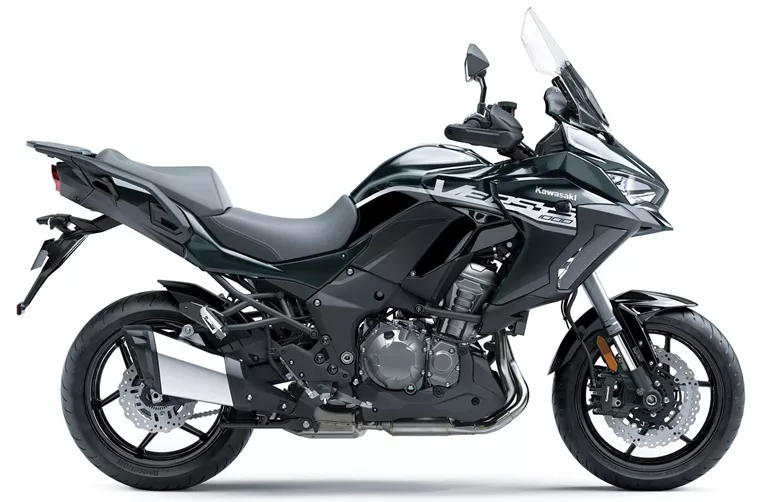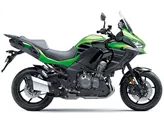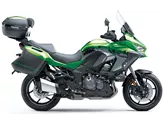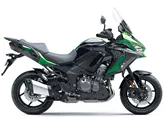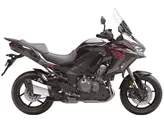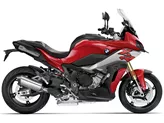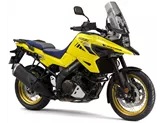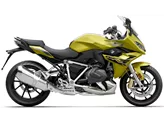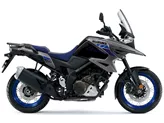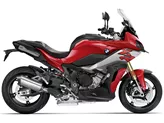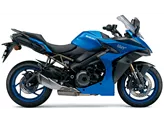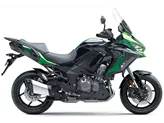Kawasaki Versys 1000 SE 2020 vs. Kawasaki Versys 1000 2016
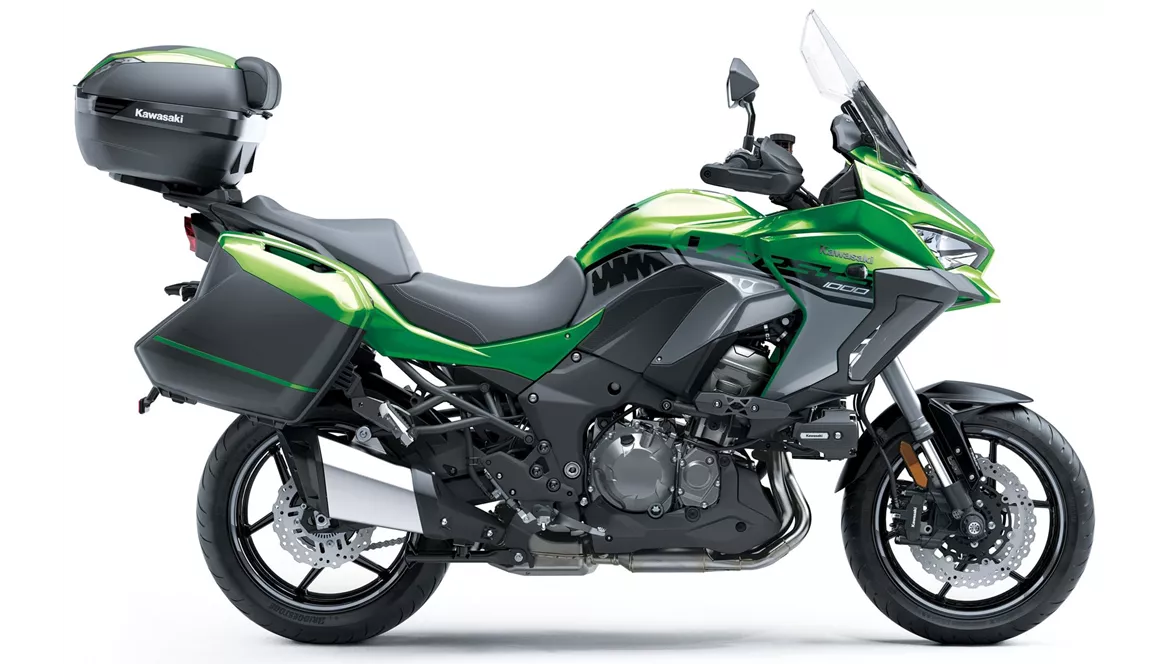
Kawasaki Versys 1000 SE 2020

Kawasaki Versys 1000 2016
Vue d’ensemble - Kawasaki Versys 1000 SE 2020 vs Kawasaki Versys 1000 2016
The Kawasaki Versys 1000 SE 2020 and the Kawasaki Versys 1000 2016 share many similarities in terms of their technical specifications. Both models have an in-line four-cylinder engine with a bore of 77 mm and a stroke of 56 mm. They both produce 120 horsepower and 102 Nm of torque, and feature an electric starter and chain transmission. The engine displacement is also the same at 1043 ccm.
In terms of suspension, both models are equipped with upside-down telescopic forks at the front and offer adjustment options for compression, preload, and rebound. The chassis of both bikes is made of aluminum, providing stability and durability.
The braking system on both models consists of double disk brakes at the front, ensuring effective stopping power. The front and rear tire diameters are 17 inches, with a rear tire width of 180 mm. The wheelbase and seat height are also identical at 1520 mm and 840 mm, respectively.
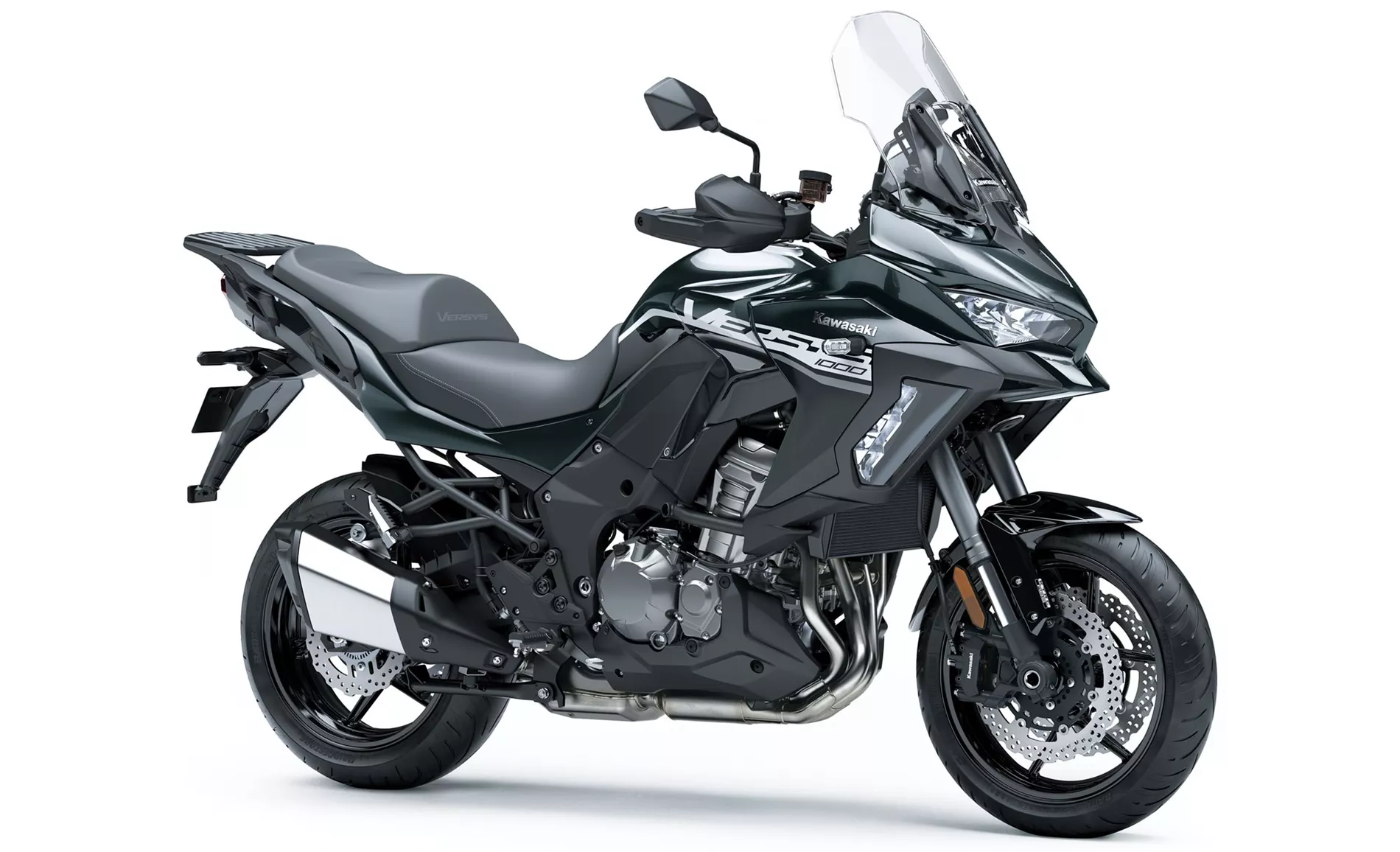
Kawasaki Versys 1000 SE 2020
However, there are some notable differences between the Kawasaki Versys 1000 SE 2020 and the Kawasaki Versys 1000 2016. The SE model of 2020 offers high riding comfort for both the rider and passenger, thanks to its well-designed seating position and great wind and weather protection. The chassis of the SE model can be adjusted very precisely to meet the specific requirements of the rider. Additionally, the engine of the SE model is well-controlled and rev-happy, providing a strong pull.
On the other hand, the 2016 model of the Versys 1000 has a sporty look and a comfortable seating position. Its in-line four-cylinder engine is powerful and refined, offering a smooth and enjoyable riding experience. The windshield on the 2016 model is adjustable, allowing the rider to customize their wind protection. The chassis of the 2016 model is stable and the braking system is well-controlled. Furthermore, the 2016 model offers a clever range of accessories and is comparatively priced lower than the 2020 SE model.

Kawasaki Versys 1000 2016
In terms of weaknesses, the 2020 SE model of the Versys 1000 has a windshield that is too generously dimensioned, which can be problematic at high temperatures as it restricts airflow even at the lowest setting. Additionally, the display and mobile phone app of the SE model may not be as advanced as those offered by competitors.
On the other hand, the 2016 model of the Versys 1000 has a windshield that can only be adjusted when the bike is stationary, which may be inconvenient for some riders. Furthermore, the gear indicator is not included as standard and requires an additional cost.
In conclusion, both the Kawasaki Versys 1000 SE 2020 and the Kawasaki Versys 1000 2016 offer a range of strengths and weaknesses. The 2020 SE model excels in terms of riding comfort, wind protection, and adjustability, while the 2016 model offers a sporty look, comfortable seating position, and a clever range of accessories at a comparatively lower price.
Caractéristiques techniques Kawasaki Versys 1000 SE 2020 par rapport à Kawasaki Versys 1000 2016
Avantages et inconvénients en comparaison
Avantages et inconvénients en comparaison
Kawasaki Versys 1000 SE 2020

La Kawasaki Versys 1000 SE est une représentante particulièrement réussie d'un genre qu'il est si difficile de classer. Au final, c'est tout simplement une très bonne moto universelle. A la conversation de bistrot, elle ne marquera pas de points avec ses 120 ch. Mais dans la pratique, tous les éléments de la moto sont conçus et dimensionnés de manière à ce que l'on aime faire de la moto et que l'on aille loin avec elle. Sur les longs trajets, elle est suffisamment puissante, offre une performance de conduite dynamique et un grand confort de conduite. Par rapport à la concurrence, la puissance ne manque pas. Kawasaki devrait plutôt améliorer l'intégration d'une application Navigatinos sur l'écran.
Kawasaki Versys 1000 2016

La Kawasaki Versys 1000 n'est pas un modèle entièrement nouveau - même si son design en donne l'impression. Son look a été très habilement adapté à la ligne agressive actuelle de Kawasaki, avec deux phares pointus et de nombreuses arêtes à l'avant. Sur le plan technique en revanche, elle a été améliorée avec précaution - mais de manière tout à fait judicieuse. Deux chevaux supplémentaires font passer la puissance à 120 ch, qui se laissent parfaitement conduire grâce à la magnifique caractéristique du quatre cylindres en ligne. Le châssis correspond aux exigences sportives d'une Kawasaki, l'ergonomie et la position de conduite confortable permettent néanmoins de voyager loin - comme le prévoit le cahier des charges d'une grande enduro. Avec des accessoires judicieux comme un set de valises, un top-case, des poignées chauffantes et des phares supplémentaires, la Versys 1000 se transforme en une touriste sérieuse sur de longues distances - le prix de base relativement bas rend ces gadgets tout à fait abordables.
Comparaison des prix Prix moyen du marché Kawasaki Versys 1000 SE vs Kawasaki Versys 1000
There are a few key differences between a Kawasaki Versys 1000 SE 2020 and a Kawasaki Versys 1000 2016. In terms of price, the actual average price of a Kawasaki Versys 1000 SE 2020 is about 47% higher. Compared to Kawasaki Versys 1000 2016 there are more Kawasaki Versys 1000 SE 2020 bikes available on the 1000PS.de Marketplace, specifically 8 compared to 7. It takes less time to sell a Kawasaki Versys 1000 with 88 days compared to 156 days for the Kawasaki Versys 1000 SE. Since model year 2019 1000PS.de editors have written 12 reviews for the Kawasaki Versys 1000 SE and 19 reviews for the Kawasaki Versys 1000 since model year 2012. The first review for the Kawasaki Versys 1000 SE was published on 11/6/2018 and now has more than 25,500 views. This compares to more than 8,400 views for the first review on Kawasaki Versys 1000 published on 11/7/2011.
